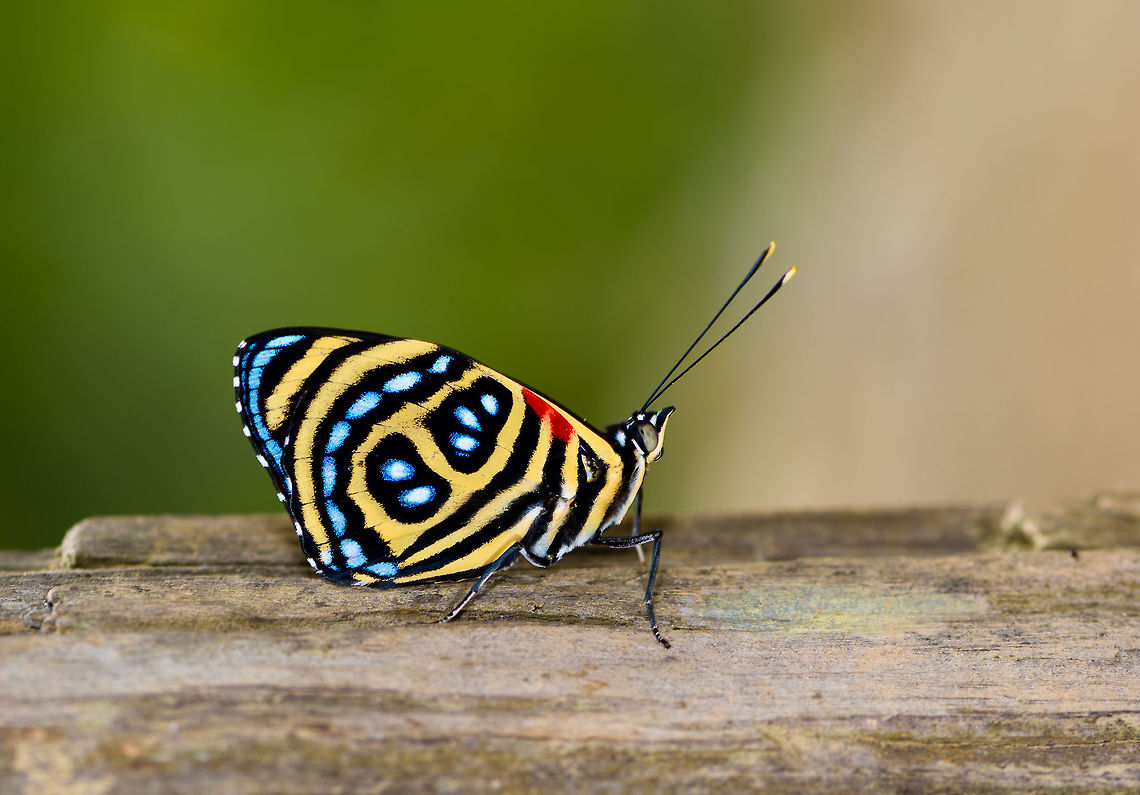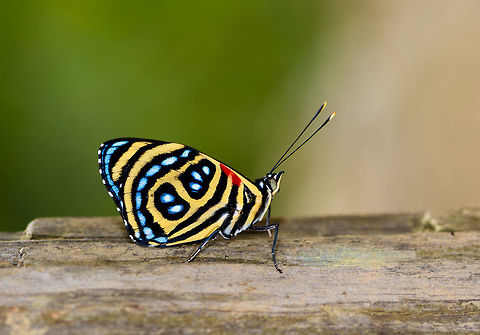 PromotedSpecies introCountry intro
PromotedSpecies introCountry intro
Godart's Numberwing, Yunguillo, Colombia
Passing a lesson learned: when finding yourself in a place with lots of "eighty eight" (numberwing) species, don't assume all individuals are of the same species. It's easy to think they are, as they are tiny, and may look quite similar to each other in general color. In just this little session of a few minutes, what I believed to be the same species, turn out to be 3 different species altogether.
Luckily, they are quite easy to identify and tell apart after the fact. Two simple keys will usually settle it:
- The two large black marks are either apart as seen here, or connected as a single mark
- Count the blue highlights within the black mark(s)

Callicore pygas, the Godart's numberwing or pygas eighty-eight, is a species of butterfly of the family Nymphalidae. It is found in Venezuela, Guyana, Ecuador, Peru, Bolivia, Paraguay and the upper Amazonian region of Brazil.

comments (11)
Godart's Numberwing (Callicore pygas) is a stunning species of butterfly that is found in South America. It is often referred to as an "eighty-eight" butterfly due to the characteristic pattern of spots on the underside of its hindwings. This pattern can look a lot like numbers, hence the common name "numberwing".
One thing that you may notice about this butterfly is that it appears to only have four legs, even though butterflies are insects, which have six legs. Godart's Numberwing is in the family Nymphalidae, which comprises at least 6,000 diverse species. The odd thing about butterflies in this family is that, while they do have six legs, they only walk on four of them. Their front pair of legs is modified— they remain curled up near the head and can't be used for walking. These modified legs are short, and instead of feet, they have little brushes of sensilla (sensory hairs). Scientists are not sure what the purpose of these reduced forelegs is, but some think they may amplify the butterfly's sense of smell, thus enhancing signaling and communication. So, it seems that they have traded the walking function of their forelegs for a chemosensory function, which may be useful in improving the overall fitness of species possessing this trait.{Spotted in Colombia by JungleDragon founder, Ferdy Christant} #JungleDragon Posted 6 years ago